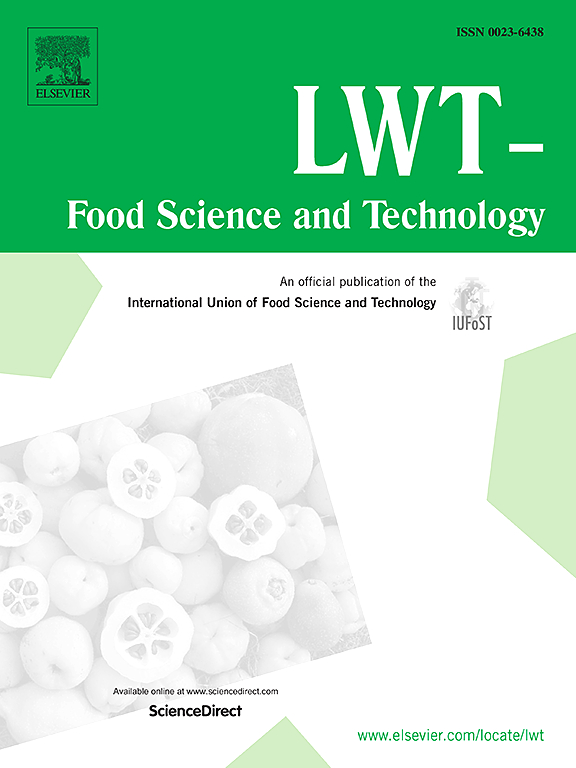The refrigerated preservation effect of Amomum tsao-ko essential oil and its microcapsules loaded on polyvinyl alcohol/starch composite film based on broad-spectrum antibacterial properties on golden pompanos
IF 6
1区 农林科学
Q1 FOOD SCIENCE & TECHNOLOGY
引用次数: 0
Abstract
In this paper, using Amomum tsao-ko essential oil (AEO) as a natural active substance, SSOS, maltodextrin, and gum arabic as slow-release carriers, and poly(vinyl alcohol), corn starch, and modified starch as base film materials, the microencapsulated AEO@PVA/mixed starch composite films (MAPS) were constructed by solution casting. The antibacterial activity of AEO and its mechanism of action was investigated. The antibacterial preservation effect of the MAPS on golden pompanos and its influence on its physical and chemical quality was evaluated. The results indicated that AEO showed an exceptional broad-spectrum antibacterial efficacy, with the highest sensitivity observed towards Vibrio parahaemolyticus (VP), Shigella putrescens (SP), Listeria monocytogenes. Furthermore, MAPS demonstrated sustained bacteriostatic effect after 24 h of incubation, with inhibition rates of 16.11% and 22.75% against VP and SP, respectively. The antimicrobial freshness preservation performance for MAPS was demonstrated by prolonging the shelf-life of fish by 4 days in low-temperature storage, effectively maintaining the quality of fish. This evidence supports the assertion that the MAPS can be employed as a natural antimicrobial preservative and environmentally friendly packaging material in the aquatic industry to enhance food quality and safety.
求助全文
约1分钟内获得全文
求助全文
来源期刊

LWT - Food Science and Technology
工程技术-食品科技
CiteScore
11.80
自引率
6.70%
发文量
1724
审稿时长
65 days
期刊介绍:
LWT - Food Science and Technology is an international journal that publishes innovative papers in the fields of food chemistry, biochemistry, microbiology, technology and nutrition. The work described should be innovative either in the approach or in the methods used. The significance of the results either for the science community or for the food industry must also be specified. Contributions written in English are welcomed in the form of review articles, short reviews, research papers, and research notes. Papers featuring animal trials and cell cultures are outside the scope of the journal and will not be considered for publication.
 求助内容:
求助内容: 应助结果提醒方式:
应助结果提醒方式:


